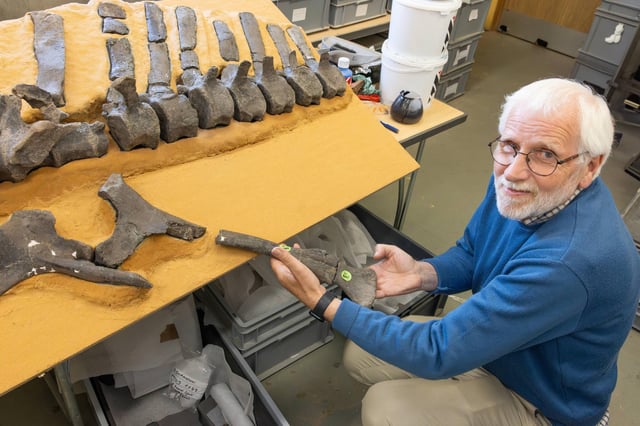Overview
- Dr Jeremy Lockwood identified the iguanodontian from Isle of Wight vertebrae that had been assumed to belong to existing species.
- The species, Istiorachis macaruthurae, dates to about 125 million years ago and bears exceptionally tall neural spines that would have formed a conspicuous sail.
- Researchers judge the sail most likely served visual signalling, possibly linked to sexual display, while noting other proposed functions remain debated.
- The study, published in Papers in Palaeontology, compared the specimen with a database of dinosaur backbones to establish its distinctiveness and evolutionary pattern.
- Natural History Museum professor Susannah Maidment says Lockwood’s collections-based work has quadrupled the recorded diversity of smaller iguanodontians on the island.

